Top Image: Combat photographer Raymond Hurley of the 165th Signal Photographic Company sitting on a knocked-out Mark VI tank in Osterode, Germany. Courtesy of the National Archives and Records Administration.
Capturing a scene, face, or story has been a constant fascination of human beings since the first cave drawings. This is a powerful concept, drawing from a number of human desires of expression or storytelling, or less artistic and more practical avenues such as preserving history or keeping records. For thousands of years humans pursued this desire with paint, stone, and the written word until the 1800s, when science began to understand chemicals and how they react to light. By the 1840s, the struggle between known science and trial and error had produced the first photographs—moments of light captured on metal or glass, preserved “forever.” Humans were instantly hooked. By the 1940s the camera was well established as a form of expression and a very practical tool. It had also advanced to a plethora of designs and types, each one reflecting a specific need or an individual discovery. Among these cameras was the Speed Graphic, one of the most iconic cameras of World War II.
Speed Graphic is a generic term applied to a series of cameras that were first developed in the early 1900s by the Folmer and Schwing Division of the Eastman Kodak Company. This large format camera was used for amateur, commercial, and artistic enterprises; however, it became most popularly known as a press camera. Its weight, mobility, and quality of image made it a perfect fit for on-the-go photographers. For artists or commercial applications, it was easily mounted on a tripod where its large negatives produced high quality images. Like its civilian operators, when the United States entered World War II it was time for the Speed Graphic to go to war.
-

Signal photographic companies included technicians for the maintenance and repair of cameras. Image courtesy of the National Archives and Records Administration.
-

Combat camera teams of the 163rd Signal Photographic Company stand for inspection with their still and motion picture cameras set up. Image courtesy of the National Archives and Records Administration.
-

Pvt. James D Witherspoon (left) and Pvt. Sidney Blau (right) of the 163rd Signal Photographic Company prepare their photographic equipment for inspection. Witherspoon is kneeling next to his PH-104 camera equipment case. A Speed Graphic camera on a tripod is visible in the background. Image courtesy of the National Archives and Records Administration.
The various service branches of the United States had an on and off again relationship with photography. Most major efforts aimed at documenting the armed forces were related to wars. In 1942, the US Army established the Army Pictorial Service (APS) with the goal of capturing still and motion pictures of the US Army for propaganda, publication, and training. The APS was responsible for supplying photographers to various commands on the home front and the warzones. It was to these photographers that the Speed Graphic was issued under the military designation PH-47.
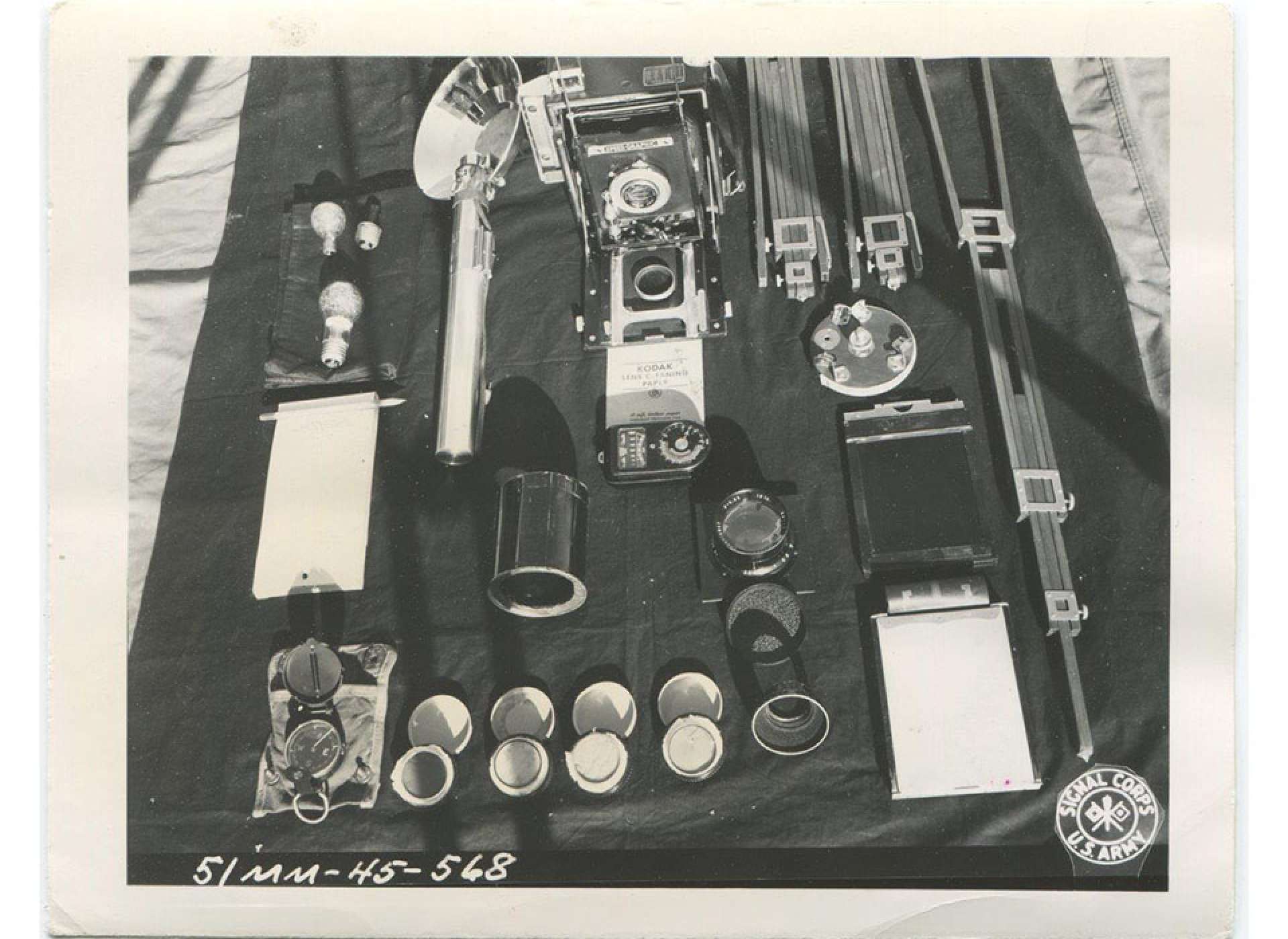
Camera equipment laid out for inspection. Image courtesy of the National Archives and Records Administration.
The PH-47 was part of the equally exciting sounding, Camera Equipment PH-104, the standard kit for US Army photographers. This kit consisted of the camera, filters, focusing cloth, film packs, film adapters, tripod, and a flash bulb, all packed nicely in a large case. The camera gets its unique bellows shape from the way it operates. Light is admitted through the lens on the front where it travels through the bellows until it strikes the light sensitive film at the back of the camera. Between the lens and the film pack is the shutter, making this a focal plane shutter. The shutter prevents light from reaching the film until the photographer has the camera pointed in the right direction and focused. The bellows allows the lens to be moved back and forth as part of the focusing process while keeping the chamber with the film completely dark. When the photographer is ready to take a picture, they pull a lever that opens the shutter. The process of taking a photo takes fractions of a second, with the shutter only allowing in enough light to expose the film. Once the film was exposed the film pack was removed from the back of the camera and replaced with a fresh pack for a new picture.
As the Speed Graphic put on its military uniform and marched off to war it was venturing into an environment that it was not well suited for, especially combat zones. Cameras are delicate instruments that are easily disturbed by dust or moisture, let alone the crashing salt water waves of an amphibious invasion or the stifling heat of a far-off Pacific jungle. In combat conditions the Speed Graphic was very complicated to operate. If done exactly by the book it took 11 individual steps from opening the camera to taking a photograph. Not ideal when under fire. In moist environments the leather bellows would develop fungus or dry-rot. War is a tough environment physically as well. Cameras were soaked, dropped, blown up, and probably worst of all (in the eyes of the repair technicians) photographers attempted to fix their own cameras in the field. The Speed Graphic only held one negative, meaning it had to be reloaded after each shot. This could prevent a photographer from getting a series of shots, or could result in double exposures if they were not paying attention to the entire process.
-

Cameras were used to photograph everything from the home front to combat. Here a cameraman takes the picture of some service troops in North Africa. Image courtesy of the National Archives and Records Administration.
-

The only way to see exactly what the Speed Graphic was pointed at is by looking through the back of the camera with no film in it. When the camera is loaded a metal wire frame on the top provides a basic sight for aligning the image before taking the shot. Image courtesy of the National Archives and Records Administration.
-

Signal corps photographer Sgt. George O. Miehle takes a photo of Sgt. Carl T. Delbridge of the 66th Division as he prepares a fox hole. Image courtesy of the National Archives and Records Administration.
For all of its shortcomings, the speed graphic made up for them all with the quality of images it produced. The large format film, 4x5 inch negatives, captured detailed images that rival most modern cameras. Its versatility was prized as well. The speed graphic could be used on a tripod for detailed studio shots but was lightweight enough to be carried in the field or during combat. Although there were complaints about its use, its work speaks for its quality. The majority of photographs produced by the US Army Signal Corps from the home front to the front lines were taken on the trusty Speed Graphic PH-47.
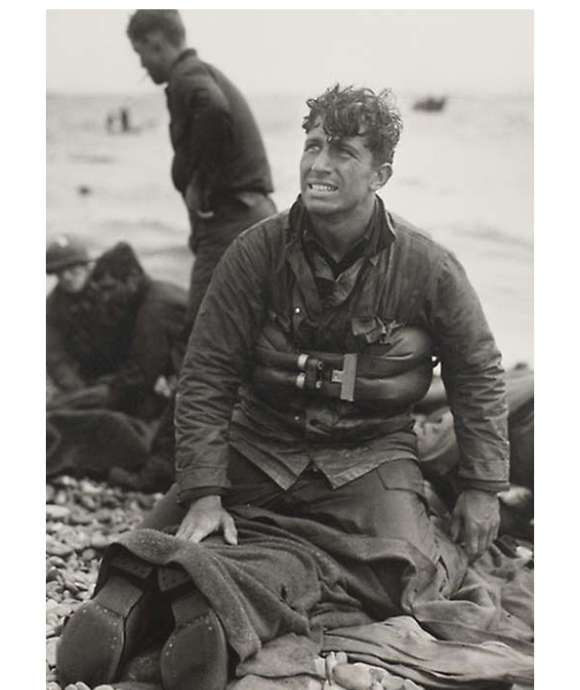
Heroic Beauty: Exposing Omaha Beach
How a Signal Corps photographic team took one of the most iconic images of Omaha Beach.
Joshua Schick
Cite this article:
MLA Citation:
APA Citation:
Chicago Style Citation:
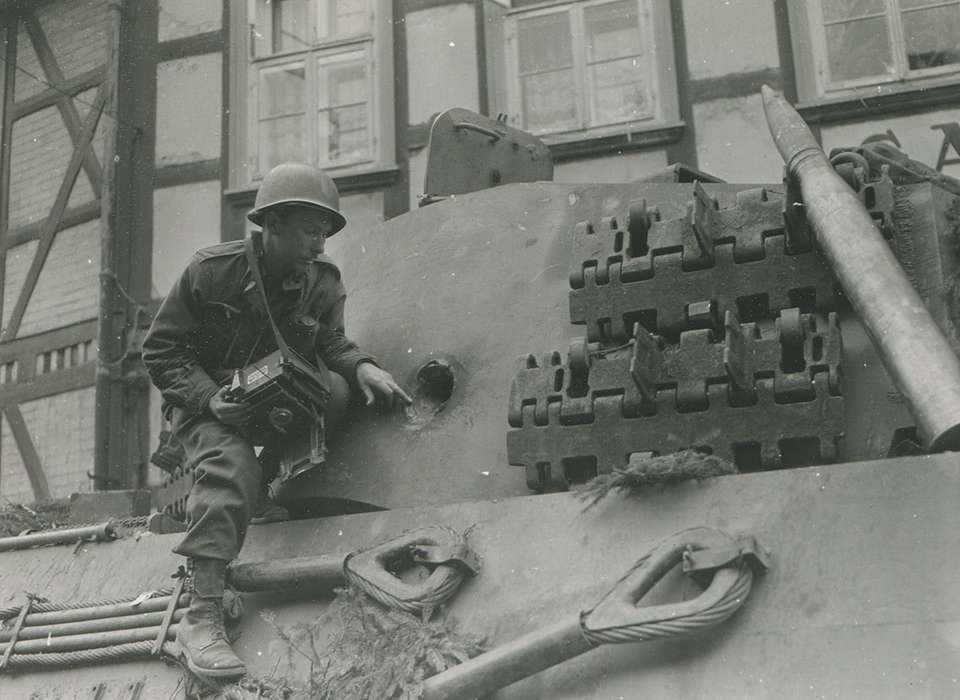
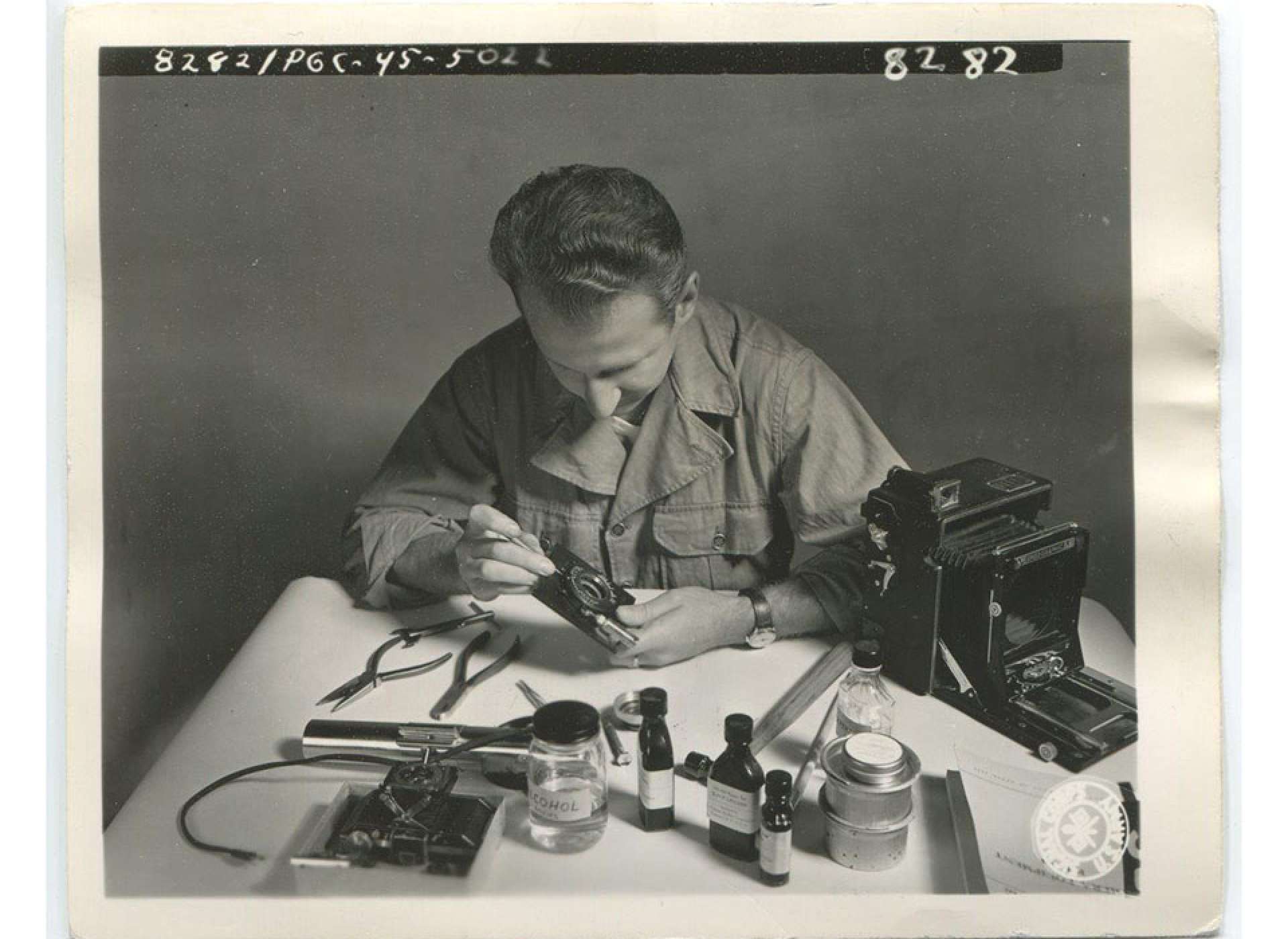
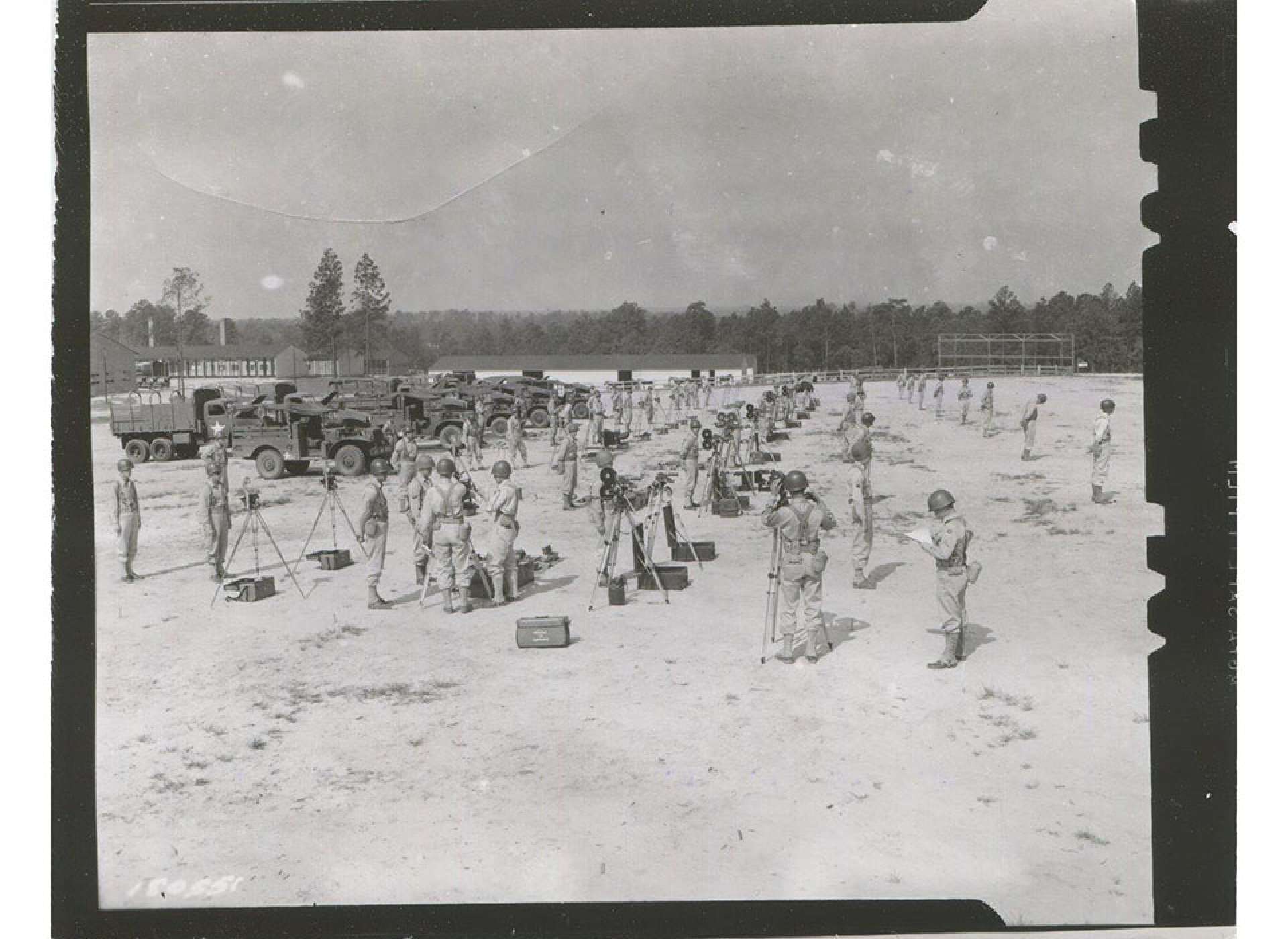
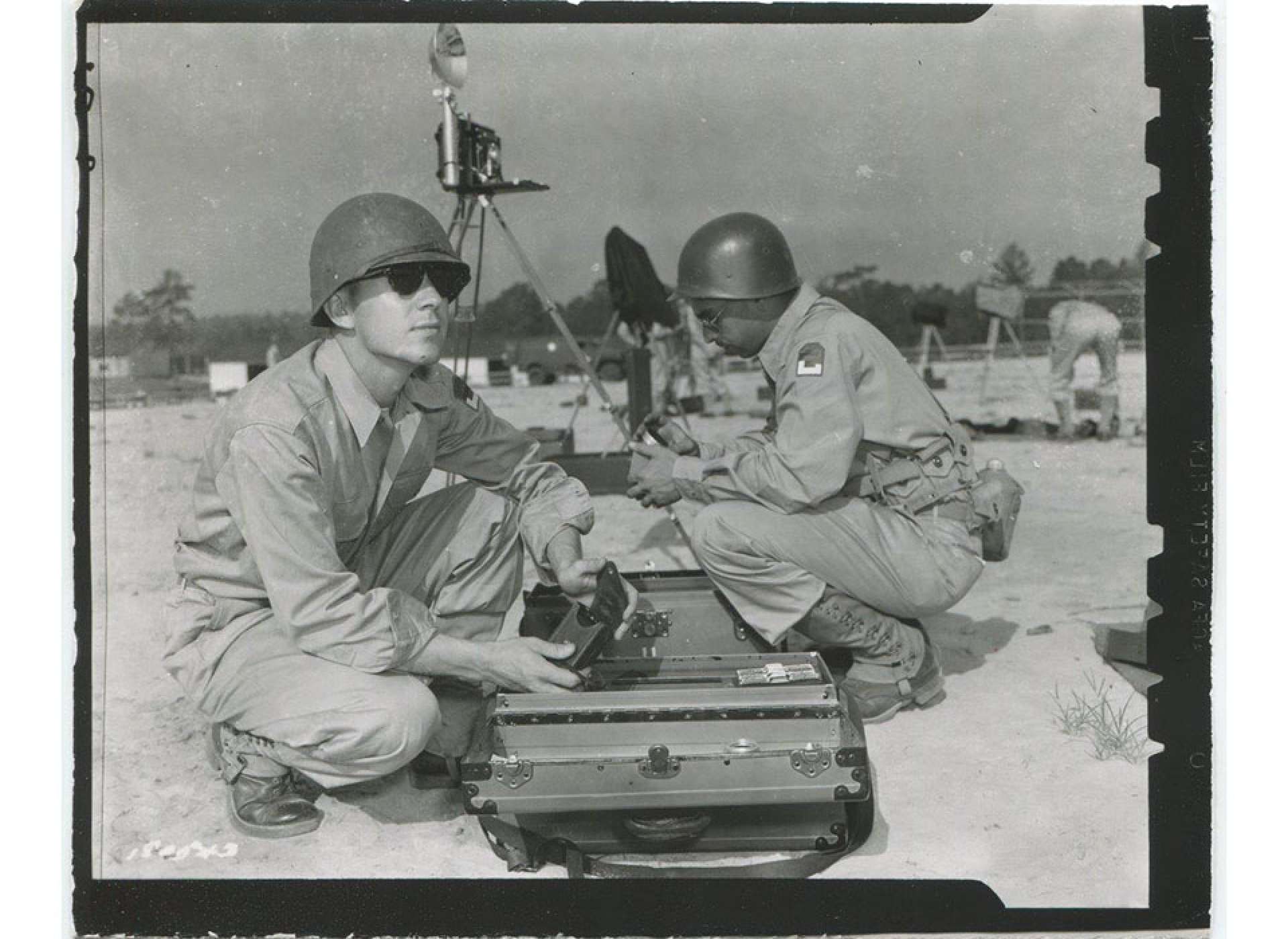
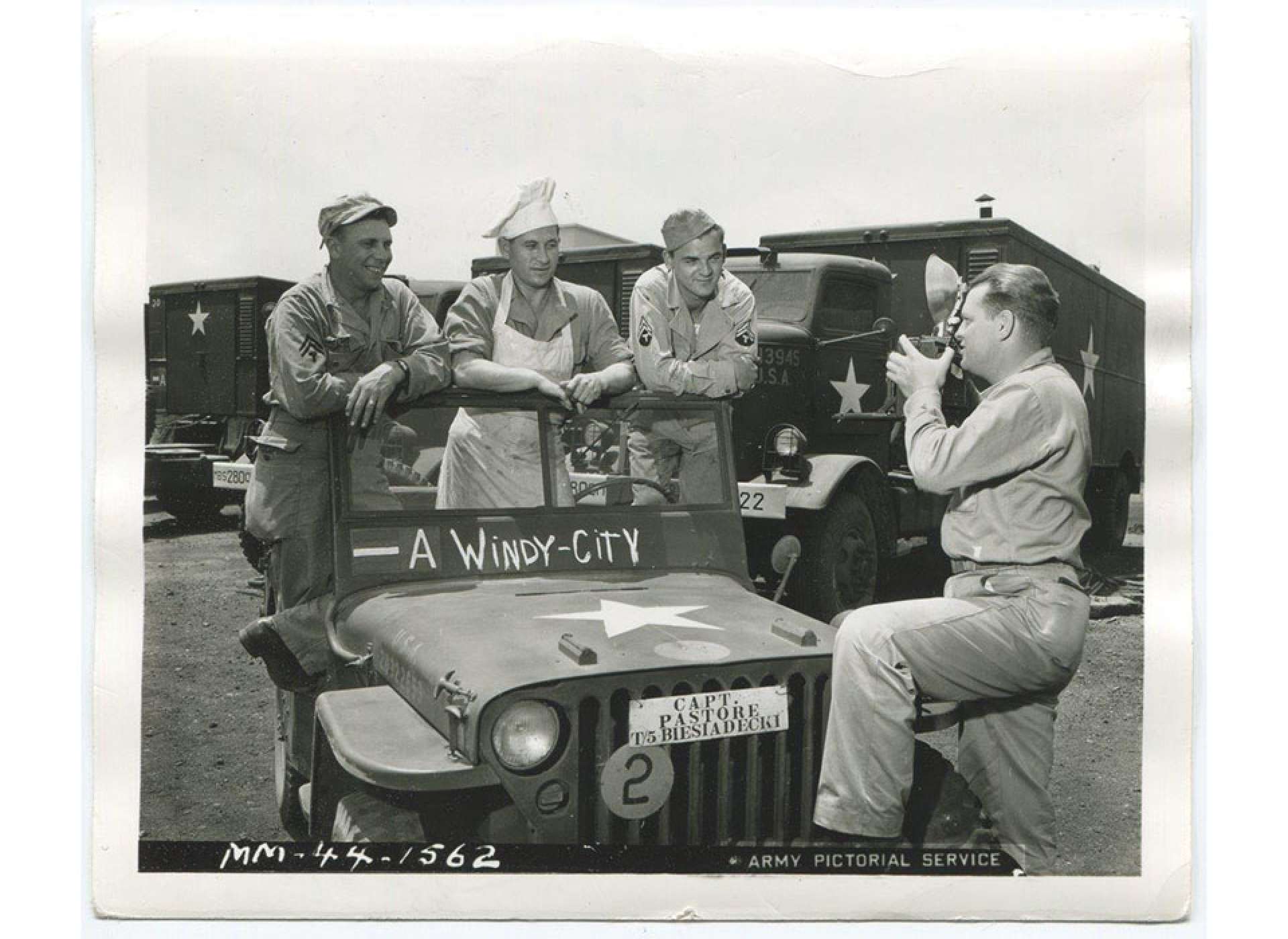
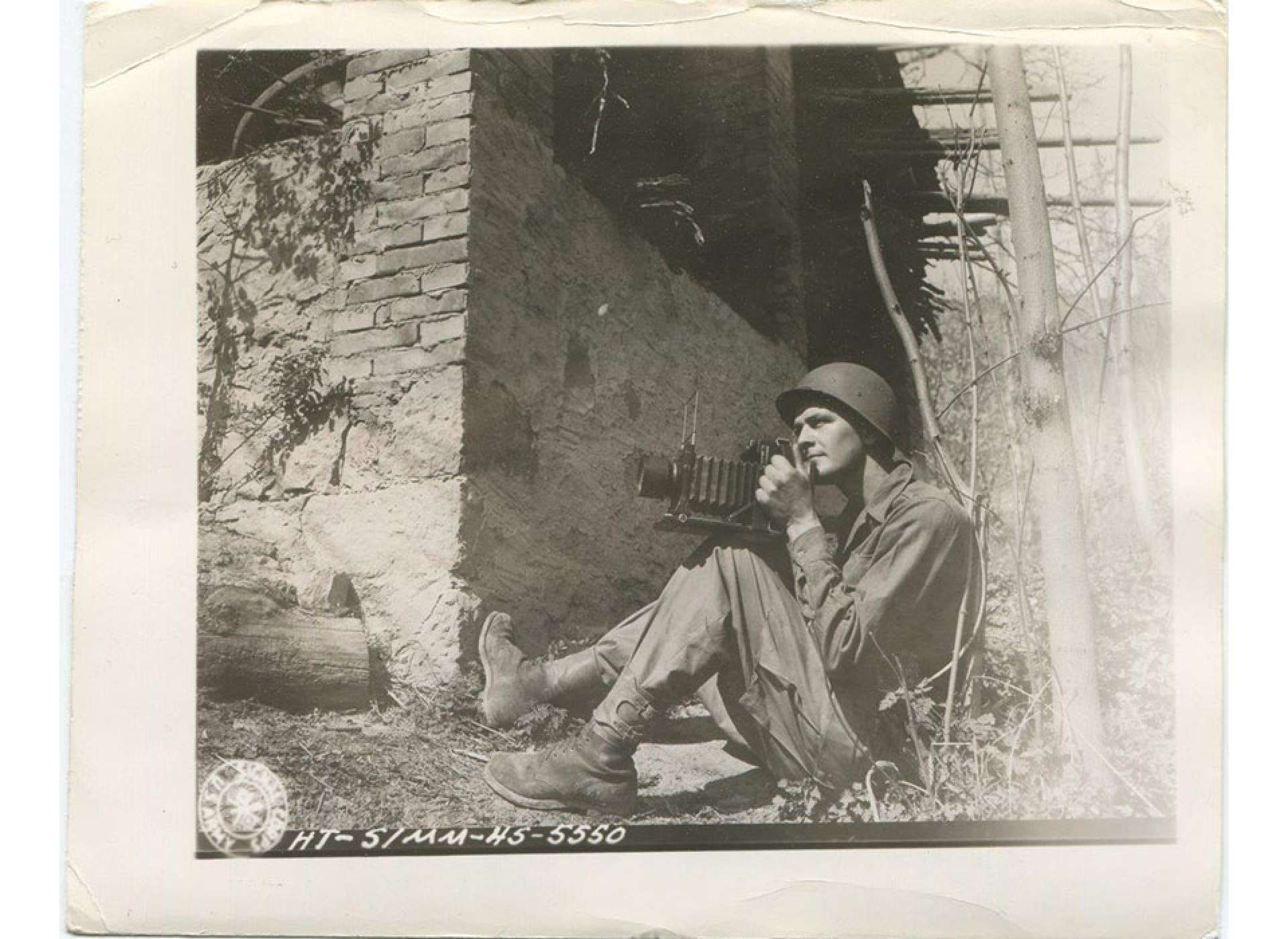
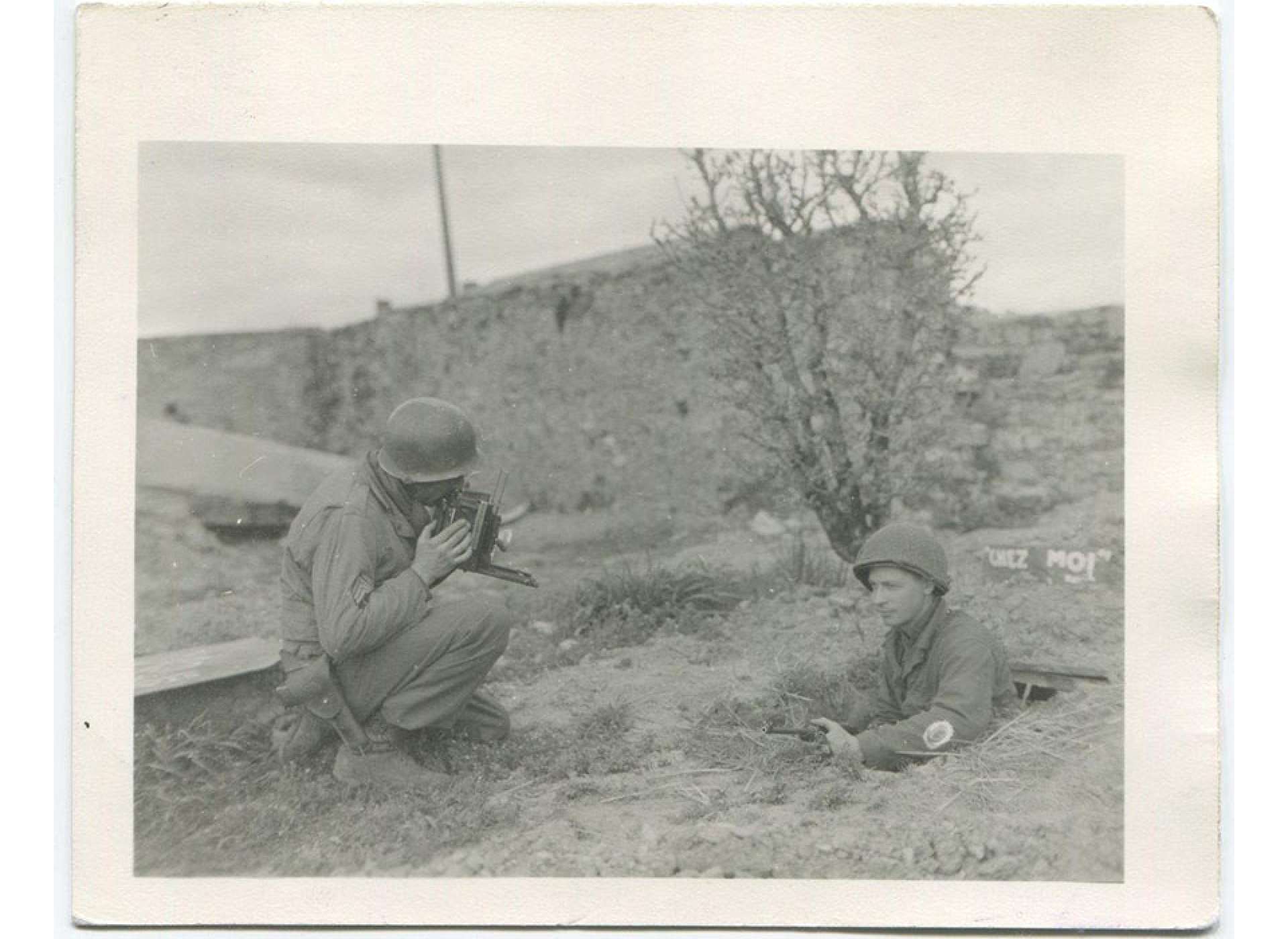

![Max Fuchs, New York City cantor, sings as Rabbi Sydney [sic] Lefkowitz, Richmond, VA, conducts the first Jewish services from Germany.](/sites/default/files/styles/max_650x650/public/2025-10/image1.jpg)






